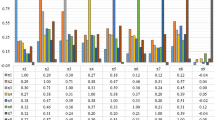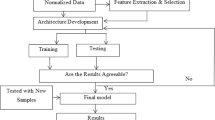Abstract
With the continuous rise in the count of deadly diseases that risk either human life or health, the medical Decision Support System keeps proving its efficiency in providing healthcare professionals and other physicians with support in making clinical decisions. Diabetes mellitus is assumed that chronic disease where the body doesn’t produce the essential amount of insulin or insulin is not utilized well by the body, which leads to extremely higher glucose (blood sugar) levels. At the same time, once diabetes has been left untreated or undetected, it may cause severe harm to the body and makes it challenging to treat, but earlier diabetes diagnosis may result in better treatment, giving rise to lower death and morbidity. The Binary Bald Eagle Search Algorithm with Optimal Fuzzy Rule-based Classifier algorithm is meticulously designed to achieve highly effective diabetes detection and classification. It incorporates a Binary Bald Eagle Search Algorithm for optimal feature subset selection and employs the Fuzzy Rule-based Classifier for diabetes detection. To further enhance its performance, the algorithm utilizes sand cat swarm optimization to optimize the parameter values of the Fuzzy Rule-based Classifier. Extensive experimentation on benchmark diabetes medical datasets demonstrates the superiority of the Binary Bald Eagle Search Algorithm—Optimal Fuzzy Rule-based Classifier approach over state-of-the-art models. The main objective of the Binary Bald Eagle Search Algorithm—Optimal Fuzzy Rule-based Classifier algorithm is to accomplish effective detection and classification of diabetes. To achieve this, the Binary Bald Eagle Search Algorithm—Optimal Fuzzy Rule-based Classifier technique primarily designs a Binary Bald Eagle Search Algorithm system for the optimal selection of feature subsets. Additionally, the detection of diabetes takes place using the Fuzzy Rule-based Classifier technique. Furthermore, the sand cat swarm optimization system was applied to optimise the Fuzzy Rule-based Classifier algorithm's parameter values. A wide range of experimental analyses is carried out on benchmark diabetes medical datasets, and the outcome was examined under many aspects. The experimental outcome portrayed the greater of the Binary Bald Eagle Search Algorithm—Optimal Fuzzy Rule-based Classifier approach over the state of art models.














Similar content being viewed by others
Data availability
The manuscript has no associated data.
References
Laila UE, Mahboob K, Khan AW, Khan F, Taekeun W (2022) An ensemble approach to predict early-stage diabetes risk using machine learning: An empirical study. Sensors 22(14):5247
Jaiswal V, Negi A, Pal T (2021) A review on current advances in machine learning based diabetes prediction. Prim Care Diabetes 15(3):435–443
Bhandari S, Pathak S, Jain SA (2023) A literature review of early-stage diabetic retinopathy detection using deep learning and evolutionary computing techniques. Arch Comput Methods Eng 30(2):799–810
Naveena S, Bharathi A (2022) A new design of diabetes detection and glucose level prediction using moth flame-based crow search deep learning. Biomed Signal Process Control 77:103748
Nadeem, MW, Goh, HG, Ponnusamy, V, Andonovic, I, Khan, MA, Hussain, M, (2021) A fusion-based machine learning approach for the prediction of the onset of diabetes. In Healthcare (Vol. 9, No. 10, p. 1393). MDPI. https://doi.org/10.3390/healthcare9101393
Karunakaran, D, Chandran RK (2023) Deep learning based diabetes mellitus prediction for healthcare monitoring. J Electric Eng Technol :1–15. https://doi.org/10.1007/s42835-023-01500-4
Thaiyalnayaki K (2021) Classification of diabetes using deep learning and svm techniques. Int J Current Res Rev 13(01):146
Hasan, DA, Zeebaree, SR, Sadeeq, MA, Shukur, HM, Zebari, RR, Alkhayyat, AH (2021) Machine Learning-based Diabetic Retinopathy Early Detection and Classification Systems-A Survey. In 2021 1st Babylon International Conference on Information Technology and Science (BICITS) (pp. 16–21). IEEE
Yadav DC, Pal S (2021) An experimental study of diversity of diabetes disease features by bagging and boosting ensemble method with rule based machine learning classifier algorithms. SN Comput Sci 2(1):50
Haq AU, Li JP, Khan J, Memon MH, Nazir S, Ahmad S, Khan GA, Ali A (2020) Intelligent machine learning approach for effective recognition of diabetes in E-healthcare using clinical data. Sensors 20(9):2649
Meganathan S, Sumathi A, Bharanika V, Hemalakshmi P, Kamali M (2022) Finding best voting classifier for diabetic disease classification. In: International Conference on Deep Sciences for Computing and Communications. Springer Nature Switzerland, Cham, pp 25–33
Mishra S, Tripathy HK, Mallick PK, Bhoi AK, Barsocchi P (2020) EAGA-MLP—an enhanced and adaptive hybrid classification model for diabetes diagnosis. Sensors 20(14):4036
Nagaraj P, Deepalakshmi P (2022) An intelligent fuzzy inference rule-based expert recommendation system for predictive diabetes diagnosis. Int J Imaging Syst Technol 32(4):1373–1396
García-Ordás MT, Benavides C, Benítez-Andrades JA, Alaiz-Moretón H, García-Rodríguez I (2021) Diabetes detection using deep learning techniques with oversampling and feature augmentation. Comput Methods Programs Biomed 202:105968
Hao J, Luo S, Pan L (2022) Rule extraction from biased random forest and fuzzy support vector machine for early diagnosis of diabetes. Sci Rep 12(1):9858
Balasubramaniyan S, Jeyakumar V, Nachimuthu DS (2022) Panoramic tongue imaging and deep convolutional machine learning model for diabetes diagnosis in humans. Sci Rep 12(1):186
Khafaga, DS, Alharbi, AH, Mohamed, I. Hosny, KM (2022) An Integrated Classification and Association Rule Technique for Early-Stage Diabetes Risk Prediction. In Healthcare (Vol. 10, No. 10, p. 2070). MDPI. https://doi.org/10.3390/healthcare10102070
Aamir KM, Sarfraz L, Ramzan M, Bilal M, Shafi J, Attique M (2021) A fuzzy rule-based system for classification of diabetes. Sensors 21(23):8095
Butt, UM, Letchmunan, S, Ali, M, Hassan, FH, Baqir, A, Sherazi, HHR (2021) Machine learning based diabetes classification and prediction for healthcare applications. J Healthcare Eng 2021 https://doi.org/10.1155/2021/9930985
Chhabra A, Hussien AG, Hashim FA (2023) Improved bald eagle search algorithm for global optimization and feature selection. Alex Eng J 68:141–180
Stavrakoudis DG, Galidaki GN, Gitas IZ, Theocharis JB (2011) A genetic fuzzy-rule-based classifier for land cover classification from hyperspectral imagery. IEEE Trans Geosci Remote Sens 50(1):130–148
Wang X, Liu Q, Zhang L (2023) An Adaptive Sand Cat Swarm Algorithm Based on Cauchy Mutation and Optimal Neighborhood Disturbance Strategy. Biomimetics 8(2):191
https://www.kaggle.com/datasets/uciml/pima-indians-diabetes-database
Kaur H, Kumari V (2022) Predictive modelling and analytics for diabetes using a machine learning approach. Appl Comput Inf 18(1/2):90–100
Chang, V, Bailey, J, Xu, QA, Sun, Z (2022) Pima Indians diabetes mellitus classification based on machine learning (ML) algorithms. Neural Comput Appl, pp.1–17. https://doi.org/10.1007/s00521-022-07049-z
Funding
The authors did not receive support from any organization for the submitted work.
Author information
Authors and Affiliations
Corresponding author
Ethics declarations
Human participants and/or animals
Not applicable.
Conflict of interest
The authors have expressed no conflict of interest.
Additional information
Publisher's Note
Springer Nature remains neutral with regard to jurisdictional claims in published maps and institutional affiliations.
Rights and permissions
Springer Nature or its licensor (e.g. a society or other partner) holds exclusive rights to this article under a publishing agreement with the author(s) or other rightsholder(s); author self-archiving of the accepted manuscript version of this article is solely governed by the terms of such publishing agreement and applicable law.
About this article
Cite this article
Karthikeyan, R., Geetha, P. & Ramaraj, E. OptiDiab: revolutionizing diabetes detection with the binary bald eagle search algorithm. Multimed Tools Appl (2024). https://doi.org/10.1007/s11042-024-18339-0
Received:
Revised:
Accepted:
Published:
DOI: https://doi.org/10.1007/s11042-024-18339-0




